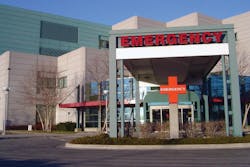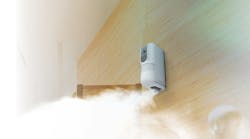Last week, the International Association for Healthcare Security & Safety announced that it has released a new handbook on "Design and Renovation Guidelines for Healthcare Facilities," which aim to help security managers build security into new hospital construction and renovation projects.
The guidelines, which were developed by the Healthcare Facility Security Design Task Force, took 13 months to compile and cover numerous areas of a healthcare building including; impatient facilities; emergency rooms; parking lots; pharmacies; infant and pediatric facilities; area with PHI; behavioral and mental health areas; cashiers and cash collection areas; utility and mechanical areas; and, biological, chemical and radiation areas. Approved and supported by the IAHSS board of directors and the International Healthcare Security & Safety Foundation, the task force was comprised of both U.S. and international security experts.
According to IAHSS Executive Director Evelyn Meserve, these guidelines are the first of their kind to be specific to the healthcare sector.
"This project was started because many of our members and one of our members who headed up this task force, Tom Smith, really felt that there was a need out there to get information to the individuals that were doing renovation and design to try to be proactive when adding security equipment in instead of being reactive after the fact," Meserve explained. "Quite often, in healthcare, security is not at the table when the first conversations are occurring about the design of a new emergency room, a new pharmacy, etc. Our hope is that (the guidelines) would get out there to the individuals and provide the information, as well as really show that it's imperative that security be at the table to be discussing this."
Having the security department be part of the planning process on new construction and renovation projects is advantageous for several reasons, according to Meserve. Not only does it allow hospitals to see where they may need to deploy various types of technology solutions, it can also reduce the installation costs of that equipment.
"It provides a better overview of what's needed to protect the area at an early stage and it also helps with cost containment," she said. "Pulling wires when there are open walls is a lot of easier than when you're having to cut through walls."
Being that many hospitals across the nation are under budget constraints, Meserve added that getting security involved in the beginning stages of design can help them reduce their costs as well.
"As I mentioned, installation is significantly more expensive after the infrastructure area has already been put up. If the security products are installed during the building phases of the project, it is less expensive for the facility," she said.
While there may be other parts of healthcare facilities that the IAHSS may need to address in the future, Meserve said that the aforementioned areas are the critical areas that hospitals should be focusing on in their security design planning.
"This is a great collective example of the areas that people really need to focus on when they're doing renovations and designs," she said.
The guidelines, which were approved by the IHSSF and IAHSS boards in December, are available free to IAHSS members on the member's only section of the organization's website. They will also be available free of charge to non-members who request them on the IAHSS website until May 31, 2012.


